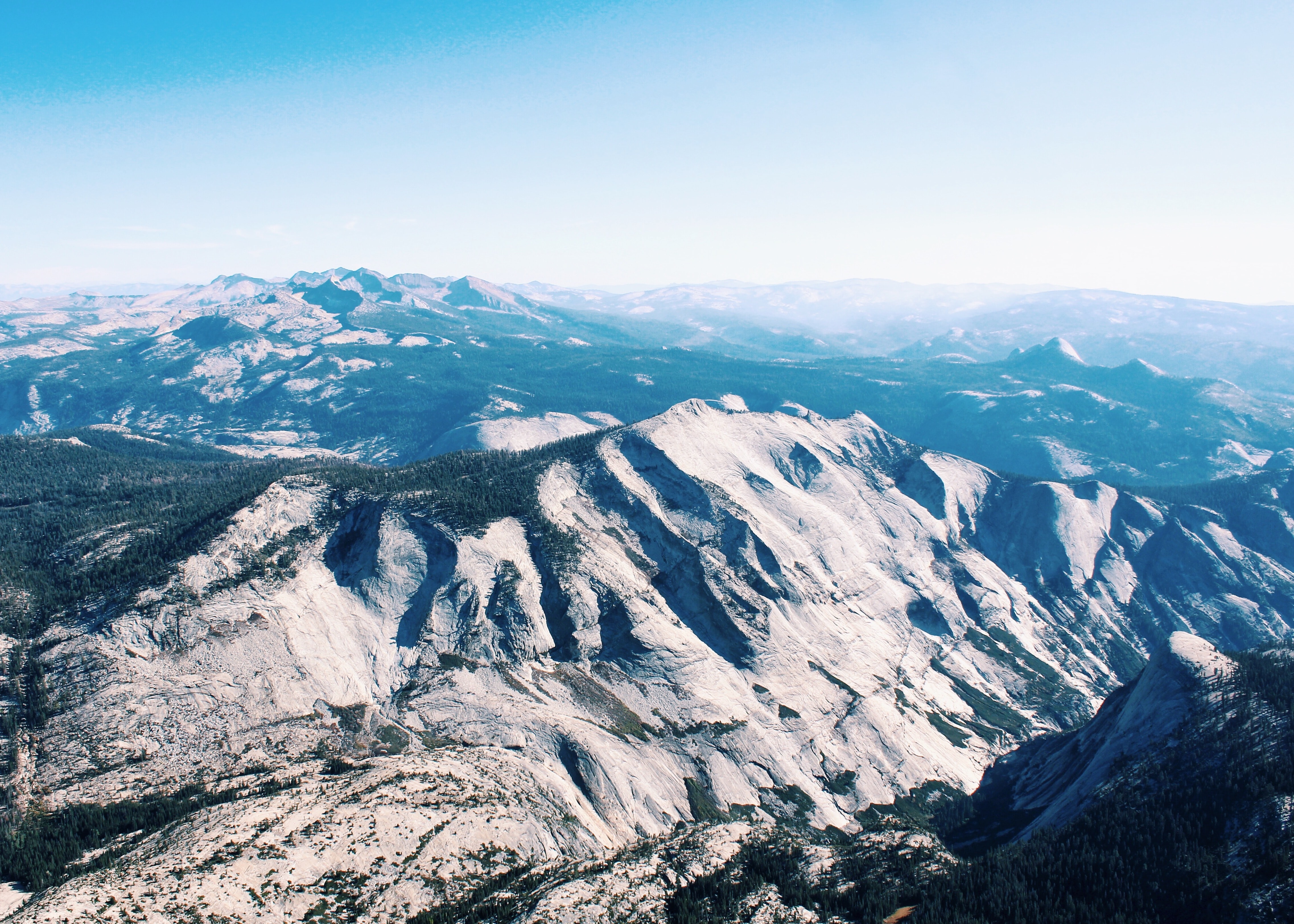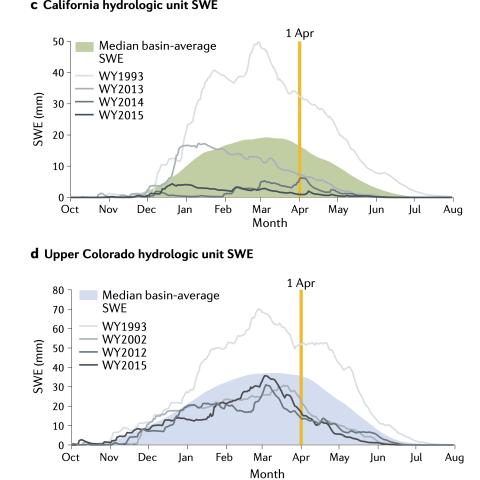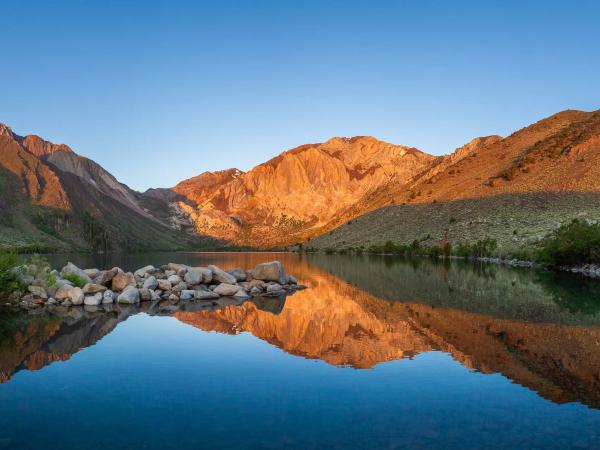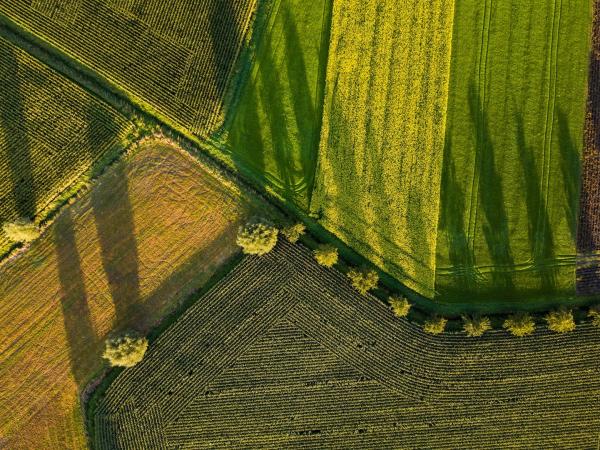
Mountains and seasonal snowpacks are known as the water fountains of the world. They play a critical role in capturing and storing water during the winter, and releasing it for downstream use during spring and summertime melts – when agricultural, ecological and municipal demand is high. As anthropogenic climate change continues to warm the atmosphere, climate models have begun to forecast the disruption of this water cycle, which could become catastrophic for water resource management in the western United States (WUS). Water storage and transportation infrastructure in the region was designed, and is now managed, with snowmelt playing a central role in operations.

A new joint study by Bren ecohydrology professor Naomi Tague, and Lawrence Berkeley National Laboratory researchers Erica Siirila-Woodburn and Alan Rhoades, analyzes the timing of a low-to-no-snow future, what it means for water management and investment opportunities that could stave off catastrophic consequences.Their review paper, published in Nature, analyzes previous climate projections and finds that if greenhouse gas emissions continue along the high-emissions scenario, low-to-no-snow winters will become a regular occurrence in the WUS in 35 to 60 years. The study also re-evaluates long standing assumptions in U.S. water management, stressing the importance of collaboration between scientists and water managers in developing and implementing climate adaptation strategies.
“This puts the loss of seasonal snowpacks throughout the Western U.S. into perspective,” said Tague. For example, it highlights that historically in years with an “average” climate, the amount of water stored in snowpacks is more than double that in existing reservoirs. “The take-home message is that changing snowpacks are critical, and that we need to act now to adapt our water use, regulations and infrastructure to avoid water crisis in the future.”
Increasing temperatures and shifting precipitation are mostly responsible for the shrinking snowpacks. Warmer temperatures mean that storms drop more water as rain rather than snow, limiting the amount of seasonal snowpack that builds up in the winter. This volume has decreased over the last several decades, and the timing of peak snowpack has shifted. Many regions have already experienced winters with very little snow in recent years – on April 1, 2015, the Sierras snowpack was 5% of normal, which is considered an "extreme" event.

The authors describe the climate projections in their study, writing: "Through the middle and end of the 21st century, an increasing fraction of the western U.S. is impacted by snow water equivalent deficits relative to the historical period. In particular, only 8 to 14% of years are classified as low-to-no snow over 1950-2000, compared to 78 to 94% over 2050-2099. In all regions, an abrupt transition occurs in the mid-to-late 21st century. "A recent study highlighted that there has been a 21% decline in the April 1 snowpack water storage in the western U.S. since the 1950s – that's equivalent to Lake Mead's storage capacity," said co-author Alan Rhoades. “In our review, we found that around mid-century we should expect a comparable decline in snowpack. By the end of the century, the decline could reach more than 50%, but with a larger range of uncertainty.”
“A low-to-no-snow future has massive implications for where and when water is stored in the western U.S.,” said co-author Erica Siirila-Woodburn. “In addition to the direct impacts on recreation and the like, there are a lot of secondary effects on natural and managed systems, from a hydrologic perspective. So that’s anything ranging from increased wildfire occurrence to changes in groundwater and surface water patterns and changes in vegetation type and density.”
“We want society to be proactive about these changes in snowpack rather than reactive,” said Rhoades. “Even with existing uncertainties, our estimates of snowpack and climate can be used to improve how we regulate and plan our use of water storage,” added Tague. Investing in and adopting improved water infrastructure and techniques can reduce our vulnerability in low snow years.
The paper outlines potential adaptation strategies that show promise for increasing water supply, but the authors also recommend more cross-collaboration, both among scientists and within society as a whole, to expand the portfolio of climate adaptation strategies.
“We are advocating for the idea of engagement with best scientific practices and more collaboration or partnership between researchers and stakeholders,” said Siirila-Woodburn. “For example, city managers are concerned with flood control; farmers are concerned with water storage; everyone has their own objectives. Even within science, the disciplines are typically siloed. If everyone were working together to manage water rather than working independently for their own purpose, there would be more water to go around.”
Further Reading
Managing Water Resources in a Low-to-No Snow Future, The UCSB Current, 8 Nov 2021
A low-to-no snow future and its impacts on water resources in the western United States, Nature reviews - Earth & Environment, 26 Oct 2021
Special thanks to Julie Chao, Harrison Tasoff and The UCSB Current



